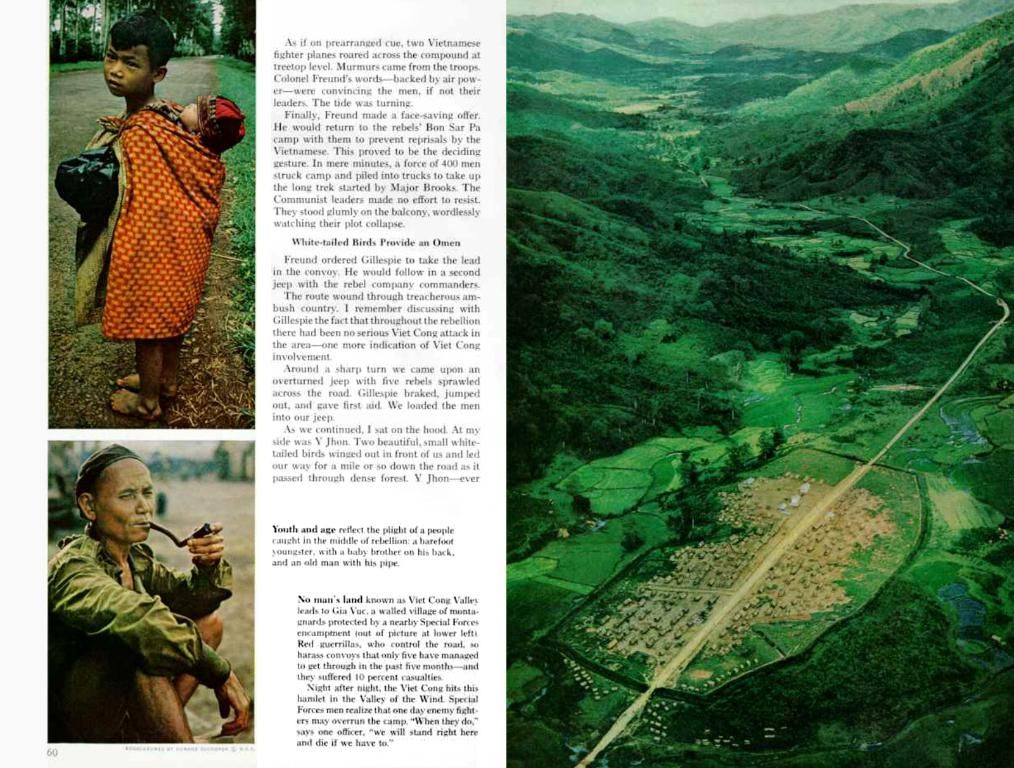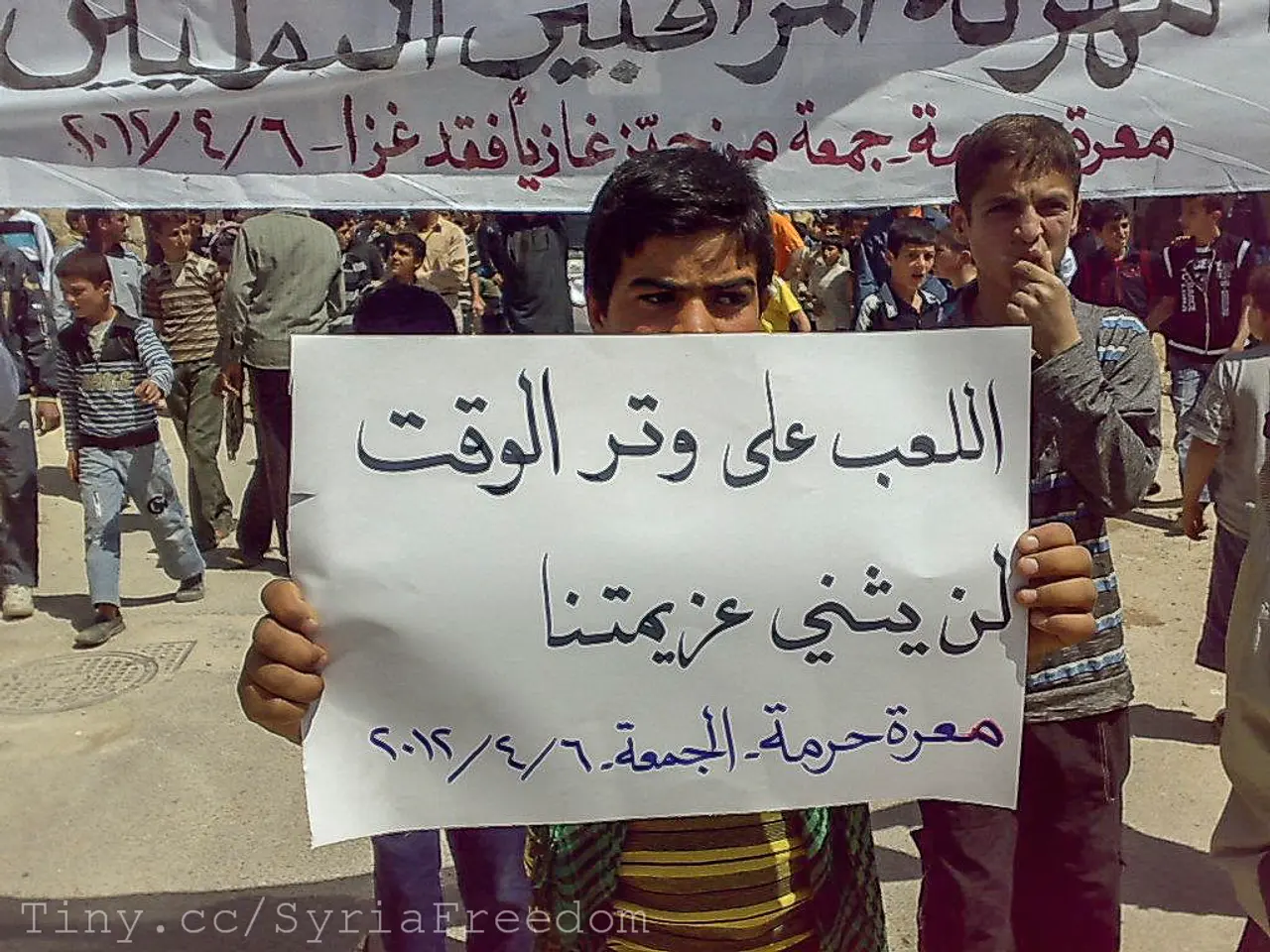Scorching heat engulfs Northern India, disrupting normal activities amidst relentless heatwaves.
Sizzling heat engulfs northern India, sparking health crises and disruptions galore! Temperatures in Sri Ganganagar, Rajasthan reached an eye-popping 47.3°C (117°F), following a long line of blistering heatwaves. While this is shy of the record-breaking 51°C (124°F) set in Phalodi, Rajasthan in 2016, it's still no picnic.
The merciless heat wave is more than just a hot summer – it's a major test for India's healthcare system. Prolonged exposure to extreme temperatures often leads to heat strokes, posing a significant threat to the poor, outdoor workers, elderly, and children. Last year, a month-long heatwave resulted in over 100 tragic deaths and more than 40,000 suspected heatstroke cases, according to the Ministry of Health data.
Delhi's residents are sweating it out, as the city experienced its first heatwave of the season, with temperatures climbing over 45°C (113°F) in some neighborhoods. The real-feel temperature, considering both heat and humidity, is downright oppressive. Life becomes unbearable, particularly in urban areas, where people are struggling to cope.
For workers like Pradeep Kumar, an autorickshaw driver, the relentless heat is affecting his health and livelihood. He shared, "This heat drains us. We drink water to keep going, but many times, our health suffers." As commuters try to avoid daytime travel to dodge the heat, Kumar's income takes a hit.
Heatwave warnings for the coming days have been issued by the Indian Meteorological Department for northern states like Rajasthan, Uttar Pradesh, Haryana, and New Delhi. However, there's a glimmer of hope with light showers forecast to start from Thursday, offering some much-needed relief.
The scorching heat in Uttar Pradesh, India's most populous state, is putting a strain on the power grid, as homes and businesses rely on air conditioners and fans to endure the heat. "The power goes out for hours during the hottest parts of the day," says Shabnam Khan, a homemaker in Lucknow, the state capital. "The fan stops working, the cooler dies, and we're left drenched in sweat."
This unprecedented demand for electricity saw Uttar Pradesh record its highest-ever electricity demand of 30,161 megawatts late Sunday, and officials expect it to surpass 32,000 megawatts in the coming weeks.
Atul Kumar Singh, a senior scientist at the Regional Meteorological Centre in Lucknow, warns that the battle against this summer's heat is far from over, since the monsoon rains, which usually bring relief, are still weeks away. "The heat and humidity combo isn't just uncomfy anymore – it's becoming a public health emergency," Singh stated.
As India braces for an exceptionally challenging summer season, both the government and the public must prepare themselves for the days ahead. To combat the health risks associated with heatwaves, the Ministry of Health advises avoiding outdoor activities during peak hours and wearing protective clothing. The government of Delhi, for instance, has initiated the Heat Action Plan, including measures such as setting up water coolers in public spaces and adjusting construction site timings.
Local communities have been proactive in providing relief by setting up cooling stations and using solar-powered cooling systems, especially in low-income areas. These initiatives, supported by organizations like the Natural Resources Defense Council, involve dedicated volunteers from the community.
Infrastructure development, sustainable cooling solutions, and community engagement and education are key long-term strategies for managing heatwaves effectively. Implementing solar reflective roofs, expanding green areas, shading public spaces, and reducing waste heat can help mitigate the urban heat island effect.
Sign up for the Daily Briefing to stay updated on the latest news and developments.
- The unrelenting heat waves in India are not mere climate phenomena; they pose significant health risks, particularly to the poor, outdoor workers, elderly, and children.
- The widespread heatwave has prompted an increased demand for electricity in northern states like Rajasthan, Uttar Pradesh, Haryana, and New Delhi, putting a strain on the power grid and causing electricity shortages.
- To ensure public health and safety during these challenging times, both the government and local communities are implementing measures such as the Heat Action Plan, setting up cooling stations, using solar-powered cooling systems, and promoting infrastructure development and sustainable cooling solutions.








